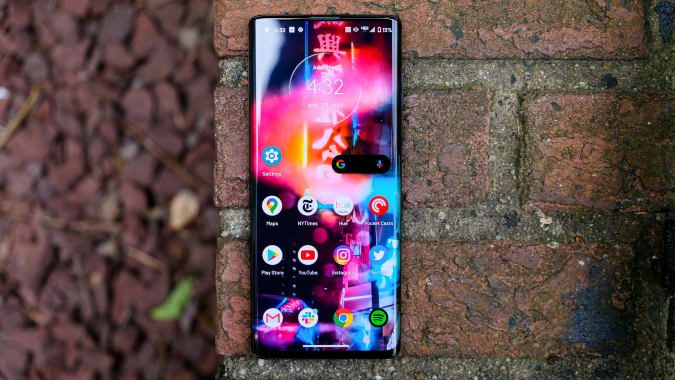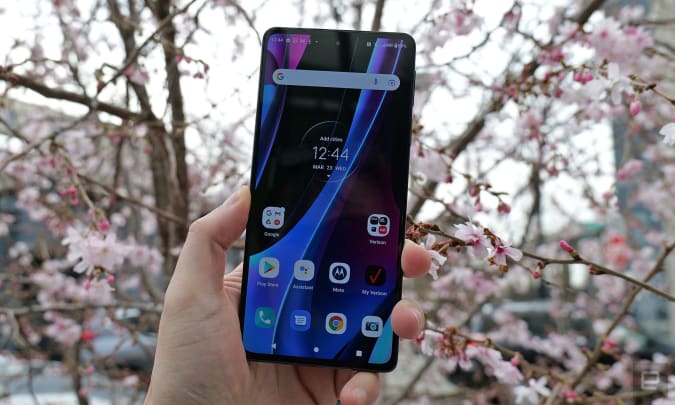While Motorola might not have the same clout in the smartphone space as Apple and Samsung, the company holds an outsized influence on the US market. By the numbers, Motorola is the third most popular smartphone maker overallthe second largest maker of prepaid phones and the biggest seller of unlocked handsets.
The problem is that, as part of the company’s attempt to gobble up more of the market following the demise of LG Mobile, Motorola has been churning out too many phones too quickly while offering little in the way of long-term support. And even though the Moto G family of phones has earned a reputation for providing great value in recent years, that legacy is starting to deteriorate as things like camera quality and support for basic features like NFC have stagnated. In short, Motorola needs to slow down and shape up.
Just look at the dizzying number of Moto G handsets that have been released in the last two years. At CES 2021, Motorola launched four new phones including the second-gen Moto G Stylus, the revived Moto G Play, the Moto G Power and the Moto One 5G Ace – the latter of which is merely a rebranded version of the Moto G 5G from 2020. Then in the summer, Motorola released another Moto G Stylus (this time with 5G) followed by the Moto G Pure last fall.
At the pace Motorola has been releasing new G-series phones, it’s become incredibly difficult to keep track of them all and the minor differences between them.
Chris Velazco/Engadget
More recently in February, Moto decided to update the G family with yet another version of Moto G Stylusand just this week Motorola returned to announce two more additions in the Moto G Stylus 5G and the Moto G 5G. And this isn’t counting stuff like the Moto G Power 2022, which was actually released in November 2021. At this point, if you’re confused by the vomit of new Moto G phones, just rest assured you’re not the only one . It’s like some twisted smartphone version of Cap’n Crunch’s Oops! All Berriesexcept that instead of tasty fruit-flavored treats, it’s an endless string of non-descript plastic handsets.
Meanwhile, some of Motorola’s most interesting phones like the 2020 Razr have been languishing waiting for an update, only getting a half-hearted refresh that added a slightly faster chip and support for 5G. Quite often, it feels like Moto has been releasing budget phones without 5G, just so the company can push out a “new” model six months later. Even then, it’s typically just sub-6GHz 5G, which only serves to increase customer confusion regarding current cellular standards. And while Moto has been idling, Samsung has dominated the foldable phone market with devices like the Galaxy Z Flip 3which is not only cheaper than the Razr, it has a better screen and cameras too.

Chris Velazco/Engadget
Another big issue with Motorola’s recent phones is paltry software support. last year, Samsung announced that it would provide four years of security updates for a wide range of Galaxy devices, including older phones and tablets such as the S10 and Tab S6. Then, just a couple of months ago, Samsung bolstered its software support again by giving four generations of Android upgrades to all of its 2021 and 2022 flagship phones. And over in Pixel land, Google also stepped up its efforts by promising five years of security updates for the Pixel 6 (though you’ll still only get three years of OS upgrades). And all of this still pales in comparison to iPhones, with Apple providing at least five years of OS and security updates for its handsets.
Then we come to Motorola, which even on its most recent flagship – the 2022 Edge+ – is only offering two major OS updates and three years of bi-monthly security patches. And if you move down to its more affordable handsets, things get even worse. The newly announced Moto G Stylus 5G and Moto G 5G, for instance, will only get a single OS upgrade. This isn’t a one-off situation either, because during a briefing about those phones, a Motorola representative confirmed that the general policy for the entire G family typically only covers one major Android OS update.

Sam Rutherford/Engadget
Even worse is that, during the same briefing, a Motorola exec seemed to be making an excuse for the poor update policy by recounting a conversation they had with a car service driver. The driver owned a Moto G device and lamented that their device seemed like it was constantly prompting them to install some sort of update. Now I can certainly empathize, sometimes it feels like everything you own constantly needs to be patched. But that’s not a good reason to drop support for a gadget after a year or two. If an owner doesn’t want to install an update for whatever reason, that’s their choice, but they should at least have the option.
Perhaps my biggest concern about Motorola’s direction is a general lack of innovation and support for basic features. Take for example the Moto G Stylus, which doesn’t have NFC. I mean come on, it’s 2022. Basically every place supports some sort of contactless payment nowadays, which requires NFC. But if you buy a budget Moto phone, too bad. And it’s not just the Moto G Stylus, because the Moto G 5G announced this week doesn’t have NFC either. The company also routinely fails to equip its handsets with substantial water resistance, often doing just enough to protect against splashes but falling far short of the IP67 or IP68 ratings you get on competing devices.
Additionally, when I reviewed the Moto Edge+ back in March, I was kind of appalled with its cameras. This is a $1,000 phone that produces low-light photos that look like they come from a $500 phone at best. I even noted in my review that it seems like Motorola is going backwards, delivering a device with a lower-resolution main camera than its predecessor, while lacking a dedicated telephoto lens.
Sam Rutherford/Engadget
Motorola tells me that it puts macro cams in its phones instead because of demand from customers who like taking close-ups. And that may be true. But I also know that it costs more to put telephoto cameras on phones, and I have a sneaking suspicion that may be the bigger driving force. While Apple, Google and Samsung are making large strides when it comes to low-light performance and computational photography, what I’ve seen from Moto’s latest pseudo-flagship is second-tier at best.
The sad thing is that it doesn’t have to be like this. There are a number of things I still appreciate about Moto devices. They have near stock builds of Android and Moto Action gestures like double chopping to turn on a phone’s flashlight are often quite handy. But those small perks are easily overshadowed by the concerning trend of too many rehashes while returning too little value.
However, it’s not too late to reverse all this. Sure, it will take some strong leadership and willpower for the company to forgo short-term sales in order to focus on long-term growth and development. Improving mobile photography isn’t easy. Just ask OnePlus’ Pete Lau, who has been very vocal about his desire to bring the photography on the company’s phones up to speed. But unless Motorola wants to become the next HTC, it needs to reduce the churn and concentrate on releasing a smaller number of higher-quality devices with the software support its customers deserve.
All products recommended by Engadget are selected by our editorial team, independent of our parent company. Some of our stories include affiliate links. If you buy something through one of these links, we may earn an affiliate commission.

